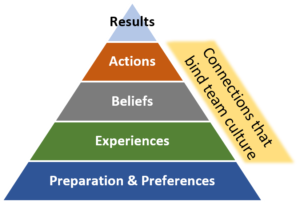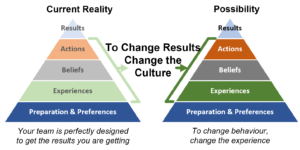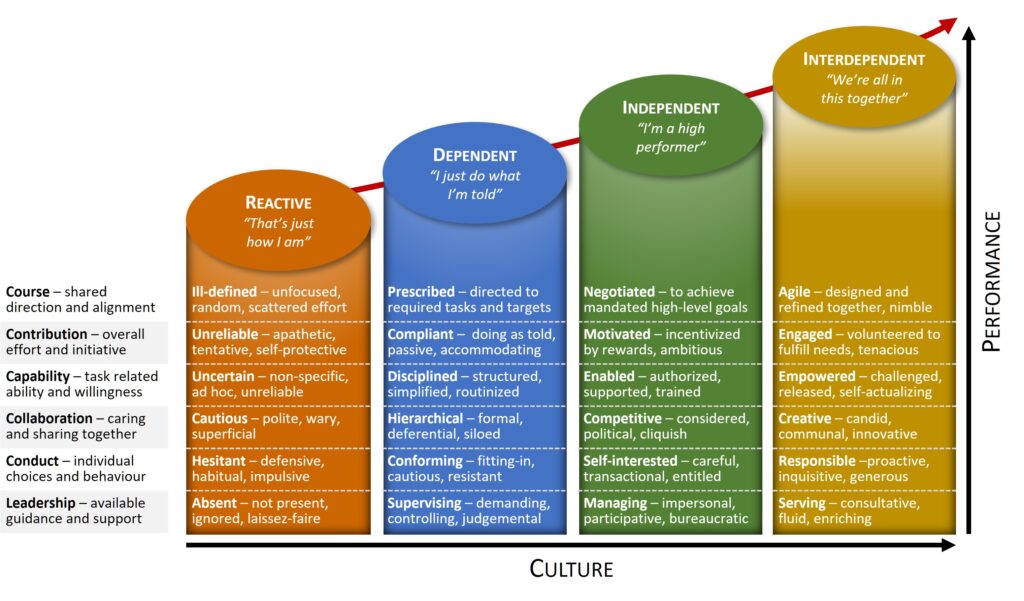Building a High Performance Team Culture
TeamTrak! | 00.01 | January 2022
The most important product of leadership is a high performance team, one that delivers results reliably. Whether a team performs depends largely on the team's culture. This article will help you better understand the most critical elements of a high performance team culture, and how you can nurture the connections that strengthen culture.

Results matter! Business challenges emerge constantly today, driven by competitive pressures, escalating stakeholder demands, evolving technologies, and an unsettled social environment. Success is elusive, often fleeting. If you fail to deliver results reliably, adapting and improving constantly, you and your organization will be quickly left behind.
People matter! Strategy, structure, and systems – the hard infrastructure of any organization – are important. But people build that infrastructure and make it work. They drive performance, their imaginations envisioning new possibilities, their talents making those possibilities real, and their energies moving things forward toward results. Your organization won’t perform, change, or grow unless the people in it do.
Teams matter! They have long been the locus of organizational decision-making and action-taking. And people are social beings, most feeling and doing their best work in the company of others with whom they feel supported and safe. When people come together with trusted others to pursue shared goals, their collective effort can drive performance well beyond what the individuals could ever achieve on their own.
If teams don’t perform in today’s dynamic, demanding environment, your organization won’t succeed.
Teams are not what they used to be! Teamwork today is not limited by geography or an organization’s boundaries. With the evolution of the internet and collaboration software, working together day to day is possible for teams with members in different offices, cities, even different countries. Business demands and circumstances make remote teaming necessary, while emerging technologies make it possible.
For our purposes, a team is any group of people sharing…
- Intended Results - a common purpose and specific goals they intend to pursue together; and,
- Required Relationships – an ongoing need to coordinate, cooperate, and collaborate to deliver results.
Most of us are members of multiple teams at work and in our lives, each with different mandates and membership. A typical front-line supervisor might, for example, lead a team of performers responsible for an area of business while also part of a peer group of leaders in their business unit, as well as participating as content expert on a special project team. Those teams may not all perform at a similar level – every team is different. But all teams share commonalities that determine whether they perform at all.
Leadership Anchors
 In climbing, the “lead” is first up, setting the path or route. Along the way, the lead places “anchors”, points of attachment to provide “protection” for them and others who follow, freeing all to use their talents confidently and competently.
In climbing, the “lead” is first up, setting the path or route. Along the way, the lead places “anchors”, points of attachment to provide “protection” for them and others who follow, freeing all to use their talents confidently and competently.
Our Leadership Anchors are habits and hacks for leading. With the right anchors in place and used well, you will be better able to apply your unique strengths and style to the challenge of delivering results by leading others.
Ask us how our coaching can help you function as a better leader, on the job, where it matters.
Have Questions?
Use the Comment section at the bottom of this page or Contact Us for more information.
 Team Culture = Performance Potential
Team Culture = Performance Potential
The raw materials of team performance are the people themselves, how well prepared individual team members are with relevant skills, knowledge, and experience, as well as their work-related preferences or style. The performance potential of a team though is not simply the sum of its parts. When good people come together as a team, there is opportunity to realize synergies that enhance productivity and bolster everyone's resilience in the face of changing, challenging circumstances. These synergies are not automatic - a group of capable, well-intended individuals can flounder if they don't work well together. Whether synergies develop depends largely on the team’s “culture”.
To an observer, culture is expressed in the ways team members consistently behave and think. The roots of culture though are deeper, in the connections members feel to the results they seek together, the work they do, and each other. These connections are the “glue” binding a team together.
In the highest performing teams, these connections are felt strongly enough that individual team members set aside selfish interests to work for the good of the whole, focused on shared priorities, solving problems creatively, and pooling resources to get more done together than they could on their own.
When the glue of culture is weak, team members become disconnected, wary of each other, contributing less than they could collectively while protecting their individual interests. Focus is lost, effort becomes disjointed, and energy is wasted in avoidance, conflict, and other unproductive behaviour.
The Roots of Performance
Developing a high-performance team culture isn’t automatic and can't be mandated. Every experience members have within the team and with each other shapes their beliefs and actions. Day to day interactions and events either strengthen the connections that form culture or weaken them. You can shape a team's culture and accelerate its development by paying attention the most critical connections binding a team, cultivating the values essential to high performance. The most critical of those connections are described below (click on each item for more).
The Performance-Culture Curve
Every team has its own culture. These cultures can vary even within the same organization, influenced by their common context but unique in how team members connect. Culture is also dynamic, responsive to both external and internal influences. Time plays a part, newly formed teams progressing toward higher performance as connections grow through positive experiences. Shifting circumstances, members coming and going, and experiences of success or failure can either drive a team higher in its development, or drag the culture down. Any team can also be become “stuck” in its development or even regress, connections breaking down, the culture damaged by happenings within or outside the team.
The Performance-Culture Curve defines four progressive stages of team culture, each stage along the curve higher performing than the last.
 The most common version of a “Reactive” team is one newly formed. Members are unsure of their mandate and each other. The culture is minimal, or just starting to emerge. Action is uncoordinated, even unpredictable, team members reacting individually to what’s happening around them rather than responding collectively. Each does what they feel they must to stay safe, typically what has served their interests in the past. Their focus is short-term, on getting by rather than getting results. Communication, what there is of it, tends to be superficial and guarded. It takes courage to speak out when you are uncertain where you’re headed and unsure how your teammates will react.
The most common version of a “Reactive” team is one newly formed. Members are unsure of their mandate and each other. The culture is minimal, or just starting to emerge. Action is uncoordinated, even unpredictable, team members reacting individually to what’s happening around them rather than responding collectively. Each does what they feel they must to stay safe, typically what has served their interests in the past. Their focus is short-term, on getting by rather than getting results. Communication, what there is of it, tends to be superficial and guarded. It takes courage to speak out when you are uncertain where you’re headed and unsure how your teammates will react.
Reactive can also be the place an established team goes when responding to crisis or failure, fearing what’s happening and uncertain about their future. External threats or low confidence can cause team members to retreat from each other and the team’s goals, engaging in behaviour that is self-protective but detrimental to the team. As the connections that comprise culture weaken, confusion and conflict grow while performance declines.
Leadership: "The stick that stirs"
 Culture building is the work of leaders. When people work together on any but the most simple undertakings, there are times when some are not prepared to do what needs doing on their own. They need leaders they can follow, someone seeing what they do not, pointing the way, taking the first steps, and supporting them as they move forward themselves. Leaders are catalysts for high performance, doing things themselves or creating experiences for others that make and strengthen the connections that build team culture. Poor or wrong-minded leadership can also damage those connections.
Culture building is the work of leaders. When people work together on any but the most simple undertakings, there are times when some are not prepared to do what needs doing on their own. They need leaders they can follow, someone seeing what they do not, pointing the way, taking the first steps, and supporting them as they move forward themselves. Leaders are catalysts for high performance, doing things themselves or creating experiences for others that make and strengthen the connections that build team culture. Poor or wrong-minded leadership can also damage those connections.
The prevailing paradigm of leadership sees leaders as in charge, setting direction then supervising the action that follows to ensure goals are achieved. In this way of thinking, teams need a “formal” leader in charge, someone appointed by the organization, given a title and authority to manage team members and the work of the team, then held accountable for the results delivered. In a team at lower levels of development or in crisis, the direction and discipline provided by a controlling overseer can be helpful, even necessary. If the environment is stable and “doing what we've always done” is the best way to achieve success, having someone formally in charge remains an effective approach to leadership.
The world though does not often work that way anymore. In dynamic, demanding environments where teams need to adapt and create constantly to deliver results, a leader exercising excessive control becomes an obstacle to achieving high performance. Formal, commanding leadership may still help from time to time, especially in a crisis. But too often it stifles the initiative and creativity of team members better positioned and prepared to control their own work. Today's teams need leaders who guide, champion, coach, partner with them, and set a good example more than they need someone to direct, supervise, expedite, or mandate team behaviour.
In the highest performing teams, "leader" becomes a fluid role, formal leaders stepping back so others can step up appropriately. This rethinking of the leadership role is often just as difficult for team members as it is for formal leaders – we all share a common history of expecting some one to be “in charge.” For a high performance culture to emerge though, every member of a team needs to understand that any of them is expected to lead in moments when their experience, skills, or insights can best serve the team. Their power to lead will be informal, via influence earned with their peers rather than any formal authority granted by their organization. They can earn that power by being credible, considerate of others, capable of the task at hand, and demonstrably committed to team results.
So What Can You Do?
As formal leader, your most effective lever on results is the team you supervise or manage. Your success will be more the product of their efforts rather than your own. The work of nurturing a high performance culture is as, and often more, important than many of the other business, management or technical activities that can easily fill your day. And, the experiences team members have with you have an out-sized impact on the team. Your behaviour is more visible, what you say attracts more attention, and the authority you wield magnifies the impact of your choices. Intentional or not, you are shaping team culture all the time.
As an informal leader, you don't have the authority to make things happen that is available to a manager or supervisor. But, you have access to things formal leaders don't see, and through your relationships with peers can influence them in different, helpful ways. Doing what you can to enhance the performance of your team offers rewards short-term in the quality of your own day-to-day work experience, and longer-term can enhance your career potential.
If you are a leader intending to impact the performance of your team, make a habit of the following activities.
Observe the Team Carefully
Everyday, a team's culture is expressed in the ways members act and interact. To be more confident what's going on in your team...
1. Watch what happens in meetings, one-on-ones, or via the team's work products.
2. Capture your observations immediately after you make them, and/or take 5 minutes each day.
3. Record what you see in a notebook or file where you can keep them together.
4. Review your notes regularly, at least weekly looking for incidents, trends, or patterns of concern.
Click here for a worksheet to guide your observations. The TeamTrak! Assessment focuses on behaviours and conditions typically seen in high performing teams.
Stay Connected with Team Members

Connect regularly with team members, initiating conversations to hear how they are doing with regard to the following, the "7 P's"...
- Progress - achievements or breakthroughs;
- Promises - and problems they see keeping them;
- Priorities - where time and energy are going;
- Plans - and team capacity to complete them;
- Professional Development - their own capability;
- Personally - not just as a performer; and,
- Partner - how well you and they work together.
All leaders should make these connections happen. When a team operates remotely, it is even more critical because opportunities to directly observe what's happening are limited. See this article for more about why these "staying connected" conversations matter, and how to conduct them in a way that maximizes their value to you and those you lead.
Create Experiences that Build Culture

Every interaction team members have with you and each other impacts the connections that bind team culture. These experiences shape what they believe and how they act, the observable features of culture. To change the culture, change their experiences. To create the right experiences more consistently...
- Plan carefully - to reinforce the beliefs and behaviours critical to team success.
- Do your plan - overcoming any hesitancy you feel and avoiding the distraction of pressing but less valuable activities that fill most days.
- Check for impact - asking for and listening considerately to the feedback of others.
- Respond reliably - acting on that feedback responsibly, or taking the extra steps necessary to have the impact you intended.

 Long to-do lists and work plans packed with projects keep a team busy, but not necessarily productive. Too often the hustle and bustle of busy teams masks effort that is diffused, scattered, wasted. People tire, not just from doing too much but from doing too much that feels like it doesn’t matter. More time and talent can be lost to frustration and conflict if teammates find themselves working at cross purposes, unable to decide together what’s wanted versus truly needed, what’s nice versus necessary, or what must be done now versus what can wait. Energy for moving forward together soon fades as demands pile up. The satisfaction that should accompany any gain made is quickly overwhelmed by a looming sense of more left to do.
Long to-do lists and work plans packed with projects keep a team busy, but not necessarily productive. Too often the hustle and bustle of busy teams masks effort that is diffused, scattered, wasted. People tire, not just from doing too much but from doing too much that feels like it doesn’t matter. More time and talent can be lost to frustration and conflict if teammates find themselves working at cross purposes, unable to decide together what’s wanted versus truly needed, what’s nice versus necessary, or what must be done now versus what can wait. Energy for moving forward together soon fades as demands pile up. The satisfaction that should accompany any gain made is quickly overwhelmed by a looming sense of more left to do. Even groups of very capable people can fail if team members choose not to contribute what they can, becoming disconnected from the work of the team.
Even groups of very capable people can fail if team members choose not to contribute what they can, becoming disconnected from the work of the team. Things change quickly today. Whether competitive pressures, emerging technologies, or escalating expectations, demands to improve and adapt are relentless. A team’s “best” work must always be getting “better” to keep performance high. Over time, once capable teams and performers can slip into a comfort zone, becoming complacent, stuck in old ways, resistant to new possibilities, disconnected from the emerging requirements of their work. Achieving and sustaining high performance challenges everyone to stretch beyond limits and barriers that have become familiar, especially their own.
Things change quickly today. Whether competitive pressures, emerging technologies, or escalating expectations, demands to improve and adapt are relentless. A team’s “best” work must always be getting “better” to keep performance high. Over time, once capable teams and performers can slip into a comfort zone, becoming complacent, stuck in old ways, resistant to new possibilities, disconnected from the emerging requirements of their work. Achieving and sustaining high performance challenges everyone to stretch beyond limits and barriers that have become familiar, especially their own. At the most basic level, teams are groups of individuals coming together to complete a task, solve a problem, or achieve a goal. If everyone does their job well, each focused on their responsibilities while communicating and coordinating with others, their efforts can be additive, the results positive. Commonality and sameness lubricate interaction in these cooperative teams, everyone “fitting in” and “on the same page”. And this may be enough if consistency and stability are critical goals for the team.
At the most basic level, teams are groups of individuals coming together to complete a task, solve a problem, or achieve a goal. If everyone does their job well, each focused on their responsibilities while communicating and coordinating with others, their efforts can be additive, the results positive. Commonality and sameness lubricate interaction in these cooperative teams, everyone “fitting in” and “on the same page”. And this may be enough if consistency and stability are critical goals for the team. There are moments on any team when members are challenged to adjust to the behaviour of others, put collective interests ahead of selfish interests, and do the hard things high performance requires. Choices made in these moments reveal who each team member really is, their intentions, competence, and reliability. Other team members watch those choices, then make their own: Can I count on this person as a teammate, or not?
There are moments on any team when members are challenged to adjust to the behaviour of others, put collective interests ahead of selfish interests, and do the hard things high performance requires. Choices made in these moments reveal who each team member really is, their intentions, competence, and reliability. Other team members watch those choices, then make their own: Can I count on this person as a teammate, or not?
 In a “Dependent” team, members wait for someone to tell them what to do or depend on prescribed roles, rules, and routines. The dominant behaviour is “following the rules”. Communication tends to be one-way, from those with authority down to others waiting to “do what they’re told”. Unsure of their leaders and teammates and disconnected from a shared purpose, individuals focus narrowly on getting their assigned tasks done and fitting in to stay out of trouble. Conversation amongst peers is relatively sparse, perhaps even restricted by those in charge.
In a “Dependent” team, members wait for someone to tell them what to do or depend on prescribed roles, rules, and routines. The dominant behaviour is “following the rules”. Communication tends to be one-way, from those with authority down to others waiting to “do what they’re told”. Unsure of their leaders and teammates and disconnected from a shared purpose, individuals focus narrowly on getting their assigned tasks done and fitting in to stay out of trouble. Conversation amongst peers is relatively sparse, perhaps even restricted by those in charge. Independence dominates our workplaces today. Often seen as the ultimate in traits, independence is nurtured via management systems that emphasize individual roles and responsibilities, and distribute performance rewards to those who stand out amongst their peers.
Independence dominates our workplaces today. Often seen as the ultimate in traits, independence is nurtured via management systems that emphasize individual roles and responsibilities, and distribute performance rewards to those who stand out amongst their peers. Interdependence is the ultimate stage of team development, where team members develop a truly collective mentality. Recognizing they can only really succeed by working together, teammates step up to help each other and serve the team as the situation requires and their own abilities allow. Doing "my" job becomes less important than delivering "our" shared results.
Interdependence is the ultimate stage of team development, where team members develop a truly collective mentality. Recognizing they can only really succeed by working together, teammates step up to help each other and serve the team as the situation requires and their own abilities allow. Doing "my" job becomes less important than delivering "our" shared results.